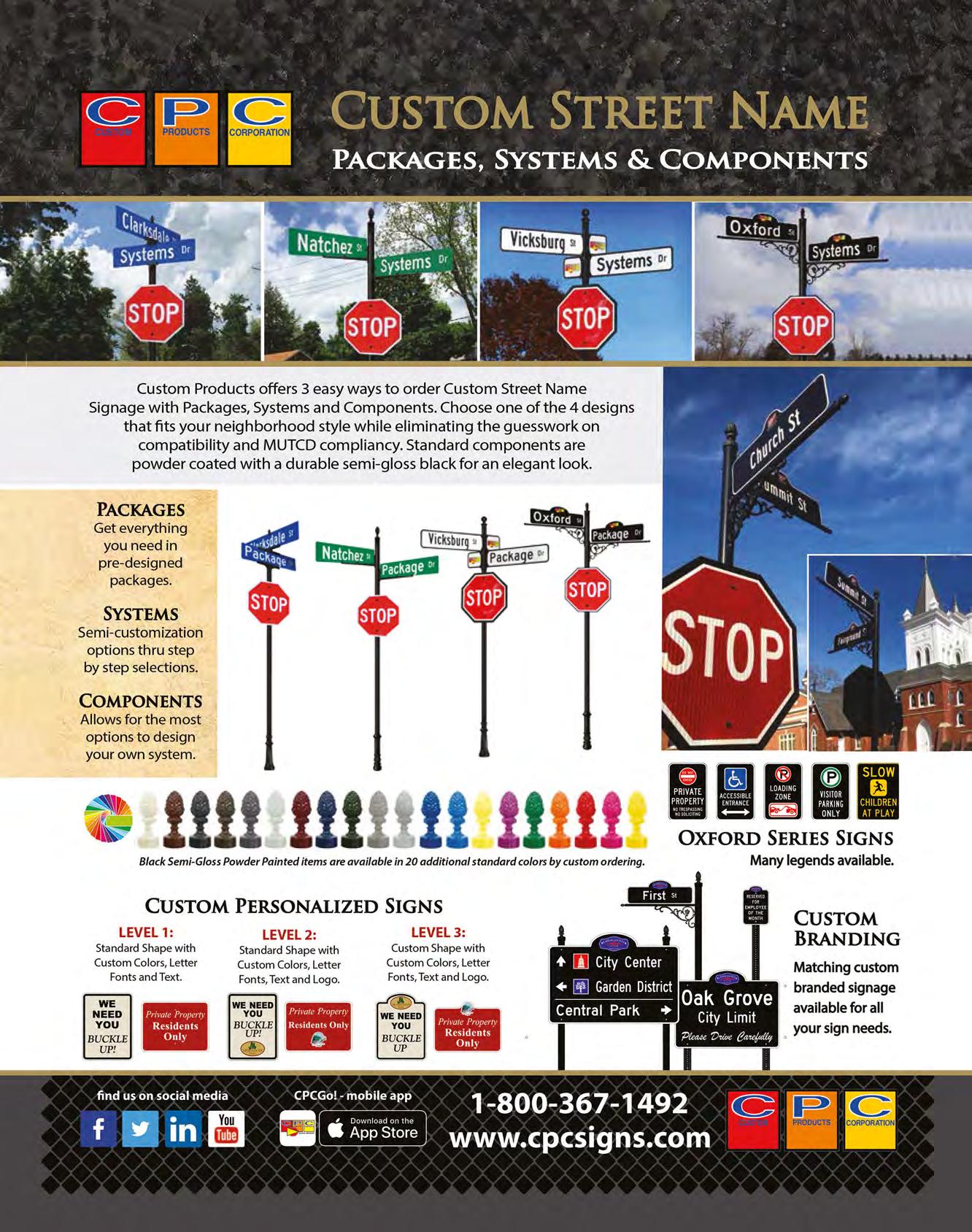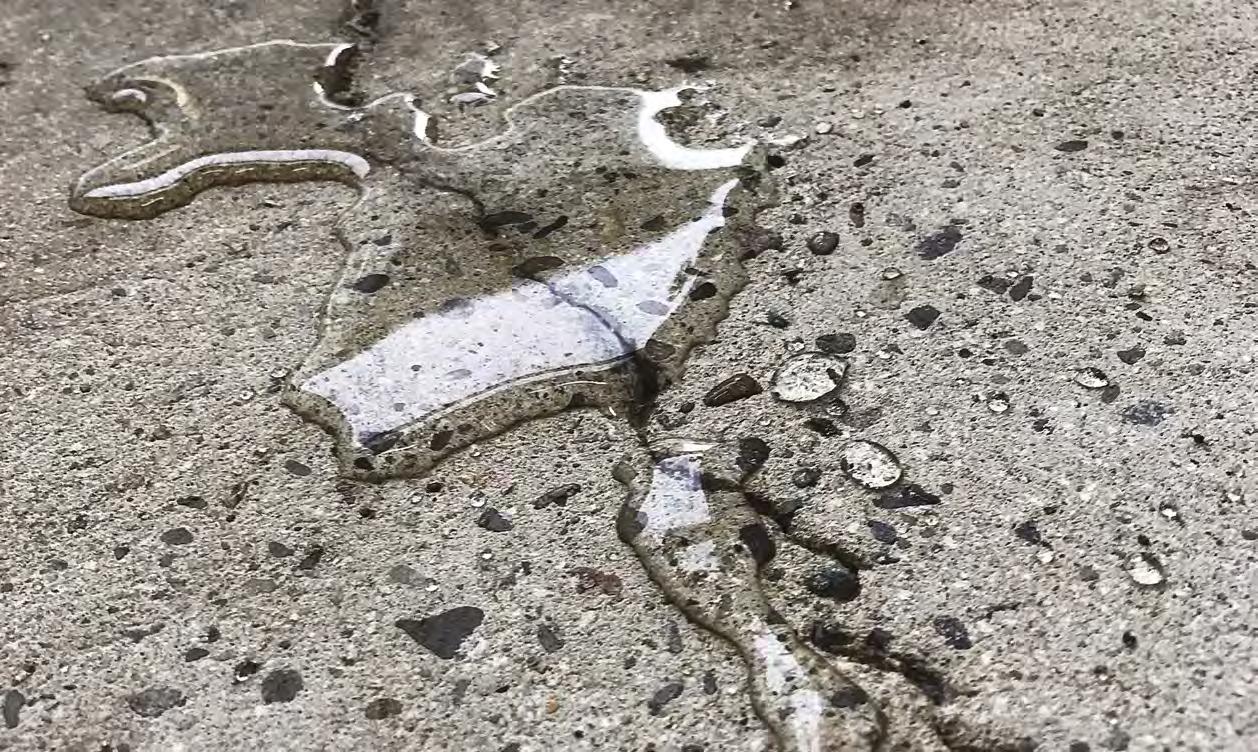
43 minute read
Personality Profile: Dedicated
Dedicated to service: Pineville, La., Mayor Clarence Fields
By JULIE YOUNG | The Municipal
When Clarence Fields was elected to the Pineville, La., City Council in 1998, he had no interest in becoming a full-time public servant. He had a good job with the Central Louisiana Electric Company, or CLEC, and enjoyed a well-earned lifestyle with his wife Rosa and his two children: Clarence Jr. and Bethany. He merely wanted to help the families in his local district.
“When you represent thousands of people, you realize that you play an important role in the community,” he said.
However, his political career was launched only a few years later when then mayor Leo Deslatte resigned two years into a four-year term. Fields, the youngest and only African American member on the council, was tapped to step in for a few months until a replacement could be elected in October 2000. By that time, he had grown into the role and wondered if he should try to stay in office.
“Most people (in my position) wouldn’t have done it,” he said, noting the community’s demographics were roughly 75% white. “The odds were against me. Still, I talked to my wife and a friend of ours who was a judge, and I prayed for the Lord to show me what to do.”
Fields’ leap of faith was not without its sacrifices and obstacles. He not only had to step away from his job, resulting in a $30,000 decrease in pay and no guarantee he could reclaim his position if the campaign wasn’t successful. He also had to sell a vehicle, his boat and make a number of other lifestyle changes, but luckily his family was willing to accept the challenge.
In the end, Fields fought off three opponents and secured nearly 66% of the votes to become the mayor of Pineville. He was reelected in 2002 with 78% of the votes and has been elected without opposition ever since.
“That was the beginning of something really special,” he said. “We put together a great staff and changed the complexion of the city. Of course, it’s also easy to be the mayor of Pineville when the citizens take such pride in the place where they live.”
Man of the people
Early in his tenure, Fields became involved in the Louisiana Municipal Association, which works to educate, advocate and empower local governments to effectively serve the citizens of Louisiana. Fields became the first Pineville mayor to serve as the president of the LMA Clarence Fields was first elected as Pineville, La.’s, mayor in 2000. (Photo provided)

In Clarence Fields’ time as mayor, Pineville, La., has received Louisiana Garden Club Federation’s Cleanest City award 11 times in 16 years. (Photo provided)
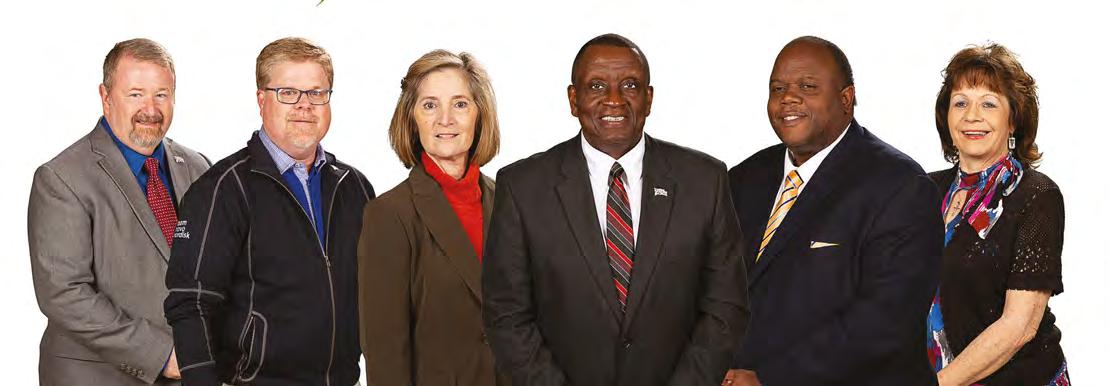
Pictured is Mayor Clarence Fields with Pineville City Council members. From left are Nathan Martin, Tom Bouchie, Christy Frederic, Mayor Fields, Kevin Dorn and Mary Galloway. (Photo provided)
and continues to serve on the executive board and as chairman of the LMA’s Legislative Affairs Committee.
“I couldn’t be as active with the LMA if I didn’t have a staff back home that can handle things in my absence,” he said. “Delegation is extremely important.”
In the 22 years he has been Pineville’s mayor, Fields has helped spearhead a number of multimillion dollar projects that have renewed business and recreational opportunities, improved the city’s infrastructure and led to new residential and commercial developments. In addition, Pineville has been awarded numerous “cleanest city” awards from the Louisiana Garden Club Federation. Fields said Pineville is a community of dedicated people who are committed to economic development, partnerships and a future of unlimited possibilities, and he is eager to talk to folks about it.
In fact, if there is a secret to Fields’ success, it is his ability to communicate with others, reach across the aisle and work with a wide range of people.
“When I talk to people over the phone, they don’t know if I am a Democrat or a Republican. They don’t know that I am African American and they don’t know that I only have a high school education,” he said. “I think it is important to mayors to be accessible to everyone, and I pride myself on being very hands-on in my work.”
On any given day, Fields may work 10 to 12 hours, but he’s not always behind a desk. Rather, he is out in the community talking to his constituents and listening to their concerns.
“My wife won’t go to the store with me anymore because I spend two or three hours in there talking to people,” he said.
Hall of Fame
Fields is not a typical politician. He rarely appears at church events in an official capacity — preferring to reserve that time for worship instead. His family and faith are the most important things in the world to him, and if he keeps those two in perspective, it takes care of everything else.
“I have been very blessed,” he said.
In February, Fields was one of six local legends who were inducted into the Winnfield-based Louisiana Political Hall of Fame by the directors of the Louisiana Political Museum. According to the Mayor Clarence Fields was inducted into the Louisiana Political Hall of Fame on Feb. 15, 2020. Fields was chosen due to his longevity in office and his work with the Louisiana Municipal Association. (Photo provided)
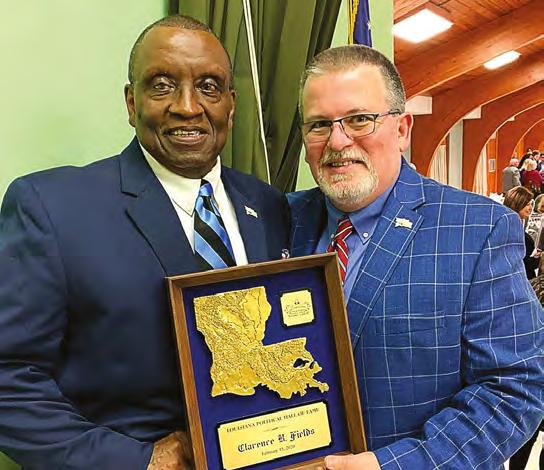
announcement, Fields was chosen due to his longevity in office and his work with the LMA.
“I had no idea that I was being considered for the Political Hall of Fame until someone mentioned my name,” he said. “I was not knowledgeable about it at all and it was not something I was vying for, but it is an honor to be selected.”
Fields said when his political career is over, he hopes it will be remembered as one in which he was able to accomplish a lot for the people of Pineville and his willingness to work with others.
“I get calls from around the state, and I gladly sit down with those leaders and help them any way I can,” he said. “That’s what it means to be a public servant … serving others.”

Mesa working on multiple project developments to transform downtown
By NICHOLETTE CARLSON | The Municipal
When looking to transform a city or town, the goal is to attract people and businesses. One of the best ways to go about that is to start with the downtown. As the 35th largest city in the nation, Mesa, Ariz., had previously not put as much focus into its downtown. However, Jeffrey McVay, Mesa’s manager of downtown transformation, explained, “Downtowns are what define a city.”
In 2009 and 2010, the city began discussing a central main plan for the downtown area involving bringing in more residences and economic development. Plans were also discussed in preparation for the opening of the light rail expansion that would lead downtown in 2015. Since the city already has a beautiful historical and arts area downtown, the goal is to bring more residences and businesses to make the economy more successful.
Mesa is home to the first Church of Jesus Christ of Latter-day Saints temple outside of Salt Lake City, Utah. The temple has been known as a destination location for visitors, particularly around Easter and Christmas. As LDS is working on redeveloping the temple and its property, the church has also chosen to work with the city in The Grove on Main project. It will include almost 300 residential units along with some retail space and the LDS visitor center and family history center. The city of Mesa is teaming up with Arizona State University to build an ASU school building attached to a City Center plaza. Construction on the school building is currently underway. Construction on the plaza is planned to begin sometime next year. (Photo provided by the city of Mesa, Ariz.)
The Grove project is currently under construction. Construction began at the end of 2019. It is estimated, as of press time, that people should be able to begin moving in by this December.
While the city is not financing this development, McVay admitted, “It’s a significant redevelopment for downtown and it sets a bar for quality of architecture, quality of structure.”
On another downtown project for a City Center, Mesa teamed up with Arizona State University. In 2012, the park board
approved the creation of a City Center plaza park. McVay mentioned partnerships with school institutions are good for economic redevelopment, and so the city wanted ASU to establish a presence downtown by building a campus.
In 2018, the construction of a single ASU building was approved. Plans and construction are underway. It will be home to ASU’s film school, which will help draw national recognition to take the film school to the next level. There are also plans for it to house a digital futures lab, which will focus on creating new technology for future programming. “We have a strong goal for creating an innovative downtown,” McVay described.
The Transform 17 project was once an old, rundown neighborhood that was purchased and cleared by the city in the 1980s. Since then the city has been making various efforts to decide on a redevelopment plan. For six months, the city brought its guiding principles to both the public and the development community to gather ideas for the property. Forums have also been held with master developers to see if ideas for a conceptual master plan were realistic.

The completed conceptual master plan was presented to the city council and the city is now in the process of selecting a partner or partners for development of the property. McVay noted all parties are currently in the last stages of getting a memorandum of understanding finalized.
There are currently 13 downtown development projects underway to boost economic redevelopment. Since the city is the largest landowner in the downtown area, it has worked to engage community members and businesses to see what other businesses and amenities they would like to see brought to the downtown area.
The Encore-Residences on First project is a two-phase apartment construction project. Phase one is currently completed with the second lot currently under construction.
Artspace Mesa consists of live-andwork apartments for artists, which are fully leased, and was completed in 2018. There are thoughts of building another Artspace for artists in the future.
The Grid is a combination of apartments and retail space that is currently under construction. This map shows the locations of redevelopment projects in downtown Mesa, Ariz. There are currently 13 projects underway to add residential space and businesses to the downtown area with others in discussion. (Photo provided by the city of Mesa, Ariz.)
The Residences on Main will be a combination of apartments and retail space. Plans for permitting are currently underway and construction is likely to begin early next year.
Found(RE) Mesa currently has a memorandum of understanding with the city. Proposed plans for the property include a boutique hotel, luxury apartments, retail space and a restaurant.
ECO Mesa is a property for proposed apartments. A developer for the property was just approved by the city council on Aug. 31, and it is believed construction will start sometime in the spring 2021.
The Facade Improvement program includes a covered walkway, since shade is an important asset in Arizona. The first phase is completed, but McVay mentioned finding funding for this project continues to be a struggle. He plans to continue it long term
as a way to provide design and construction services to downtown businesses.
Cardinal Capital Development is a plan for approximately 144 units in three stories. This project is undergoing zoning approvals and working on permitting.
CO+HOOTS at Benedictine University is a plan for a co-working space to help support academic entrepreneurship in partnership with the university.
Brown and Brown Development will be a multiphase development project with two sites for future buildings. Development is currently in the planning and zoning phase, awaiting final zoning approval.
Mesa is described by McVay as “the biggest suburb nobody knows about,” and he is intent to change that. After five years in his position, he is finally able to see how all the city’s plans and deals are manifesting. While growing the city, McVay also wants to ensure the local economy grows and is supported. He not only wants to grow residences and businesses, he is also focusing on the “connective tissue” that will connect the downtown. He believes in keeping a balance in order to attract all ages and generations to the city and create a downtown arts and innovation district.
McVay stresses this transformation and revitalization of downtown is no short-term plan. The city will continue to invest in attracting businesses and people with higher levels of amenities available downtown. If a person returns in five years, McVay noted, they’ll notice
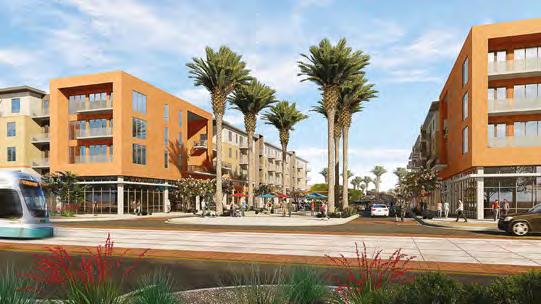
Mesa has a strong historical and arts presence in the downtown area. Artspace Mesa consists of live-and-work apartments for artists that were completed in 2018. These lofts in the arts district will provide more residential and work space for artists. (Photo provided by the city of Mesa, Ariz.)
some changes. In 10 years, the city will have some big changes. If a visitor waits 15 years, they would likely hardly recognize the city.
“We aren’t looking to just change a little bit,” he stressed. “We are looking to transform downtown.”
Midwest Tractor & Equipment
Your Snow Removal Truck Headquarters
2010 Kenworth T-800 - ISM Cummins 350 HP - Allison Automatic Transmission - 14 ft Stainless Steel Monore Spreader Several Trucks - 12 ft Underbody Blade - Front Plow Mount in Stock! - ONLY 19,000 MILES & EXCELLENT CONDITION $87,500

2012 IHC 7400 - Maxforce 285 HP - Allison Automatic Transmission - 10 ft Stainless Steel Dump - Slide-in Spreader - Underbody Blade - Front Plow Mount - 50,000 Miles $59,500
PANDEMIC RESPONSE SOLUTIONS

For almost 25 years FSI® has been there to assist and serve in time of need. FSI® offers a comprehensive range of Pandemic response solutions that are customizable, come in multiple sizes and configurations, are simple and fast to place in service, and that last the test of time – all available through a worldwide FSI® Healthcare Distribution Network

FSI® Patient Isolation Iso Chambers/Iso Rooms Iso Shelters/HEPA - UVGI - Far UVC 222nm Air Filtration Systems

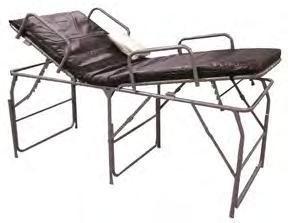



FSI® Shelter Systems TEAS shelters (Temporary emergency air shelters)/Isolation Shelters/Alternate Care/ Mobile Field Hospitals/Drive Through – Vaccine Flu Shot Shelters
EMS Products Disposable Backboards/Clothing Bedding/Medical Field Cots/Vests…

FSI® Decon Shower Systems DAT® series of Liquid Disbursement Decon Shower Systems/Disinfection Stations/Far UVC 222nm Decon/Electrostatic Equipment Decon/Trailer Systems
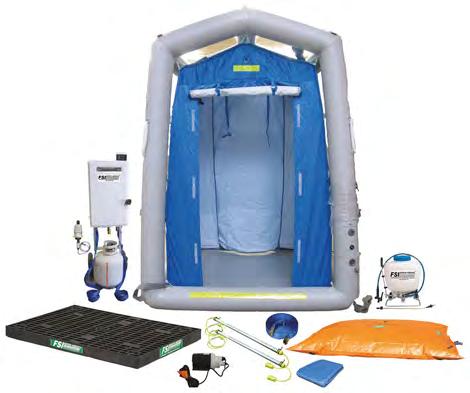
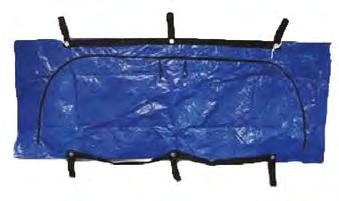
Mortuary Products Body Bags/Mortuary Racks Refrigerated Trailer Storage
FSI North America® A Division of Fire Safety International, Inc.®
311 Abbe Road, Sheffield Lake OH USA 44054 Phone (440) 949 2400 | Fax (440) 949 2900 E-mail: sales@fsinorth.com | Web: www.fsinorth.com
CAHOOTS serves as crisis intervention resource in its communities
By LAUREN CAGGIANO | The Municipal
Law enforcement and mental health don’t have to be mutually exclusive or even at odds. In fact an innovative model out of the Eugene-Springfield metro area of Oregon is answering the call—literally.
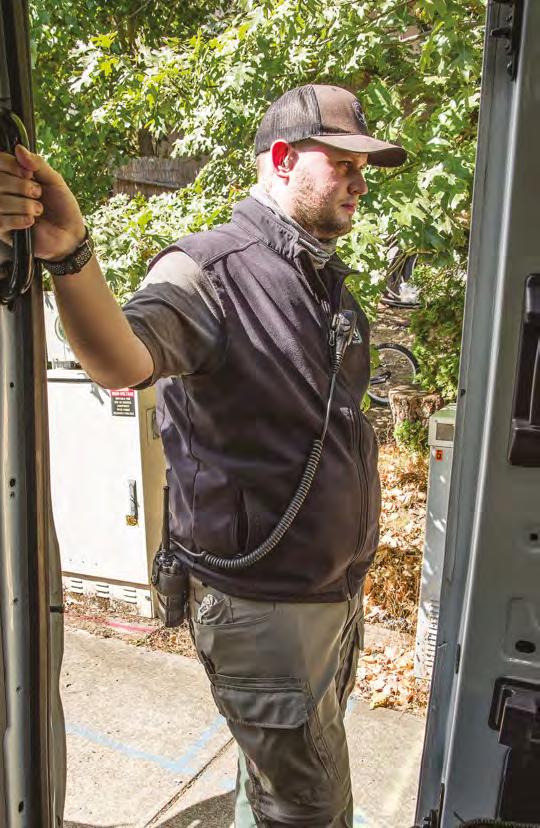
CAHOOTS medic Christian Hawks responds to a call on shift. (Photo provided) A program of White Bird Clinic, Crisis Assistance Helping Out On The Streets, or CAHOOTS, provides mobile crisis intervention. Each team responding to calls consists of a medic and a crisis worker, and several of these professionals are cross trained in both areas.
According to White Bird Clinic’s Director of Consulting Timothy Black, CAHOOTS has been officially around for more than three decades. But the lineage starts about 20 years earlier, in the late 1960s. At that time Eugene was seeing a lot of the same socioeconomic and mental health issues as the Bay Area. Being situated between San Francisco and Canada, there was a regular flow of people who brought with them their own struggles and addictions. At the same time, they had groups like the Merry Pranksters making their presence known.
“So, we were experiencing a kind of culture shock, and with it, this recognition that the existing systems in our community just weren’t adequate to respond to the level of need, i.e., mental health needs, treatment for addiction and housing, etc.,” said Black. “And with some of the early deinstitutionalization practices that the Kennedy administration enacted, that was kind of the perfect storm.”
These conditions are what promoted CAHOOTS founders to band together and create an “alternative model” to address these realities, Black said. The “Bummer Squad,” as it became known, was a grassroots response to crises of various natures. Over time its members were associated as a trusted resource for crisis intervention, even if they were acting in a de facto manner. A few decades later brought a turning point for CAHOOTS and the community at large.
“A community policing grant became available in the late 1980s for the city of Eugene, and that was where we got the pilot funding for this formal response,” said Black. “The larger chunk (of funding) went to develop a more traditional mental health unit, kind of under the guise of community policing. But then they kept the chunk and said, ‘Okay, White Bird Clinic…we really value what you do in the community. We see how folks look to you, and we know that we use you all the time for your crisis center. So, let’s work together on this.’”
If you ask Black, the Bummer Squad’s service delivery model really paved the way for its success. As the name CAHOOTS implies, these institutions don’t have to be in opposition but can work in tandem to problem solve. A lot has changed since the days of the late 1980s,
in terms of both funding and needs, and the organization has adapted over the years to respond to the changing times.
“When we first started out, it was a fivedays-a-week, eight-hours-a-day response, Tuesdays through Saturdays 4 p.m. to midnight. And we really had kind of a small service footprint for a long time. It wasn’t until the early 2000s that we started to really expand on any sort of meaningful scale. And it was really in 2010, that we had our first really big expansion of services. And it’s only been the last four years that we’ve been doing this and on a 24/7 basis. So, it’s taken us a while to get to where we are.”
Any meaningful sustainable change takes time to implement. But it can pay off in the end. In the case of Eugene-Springfield, scaling up funding for CAHOOTS has meant local police can focus their time on calls that pertain to actual policing, not mental health crises per se. The CAHOOTS program budget is about $2.1 million annually, according to its website, while the combined annual budgets for the Eugene and Springfield police departments are $90 million. In 2017, the CAHOOTS teams answered 17% of the Eugene Police Department’s overall call volume. The program saves the city of Eugene an estimated $8.5 million in public safety spending annually.
But what can’t be quantified per se is the weight lifted from law enforcement.
“We’re talking about something that really is oriented around making their job easier,” said Black. “This (allows) each public safety system to be able to focus on doing fewer things better. And if we can support them by responding to those mental health calls and requests for social service, this means the officers are free to do things that community policing says they should be doing, like getting out of their squad cars and building relationships with the community.”
In other words, when police can shift from being reactive to proactive, everyone wins. But according to Black — who now consults with communities around the country about bringing the CAHOOTS model to their area — this shift comes with a lot of heavy lifting. For one, he said, there has to be what he refers to as alignment around the concept. Are elected officials and other community leaders on board?
In his experiences, the cities and towns who are the most effective at implementing such a program have a grassroots CAHOOTS medic Christian Hawks stands next to one of the CAHOOTS fleet’s vans. (Photo provided)
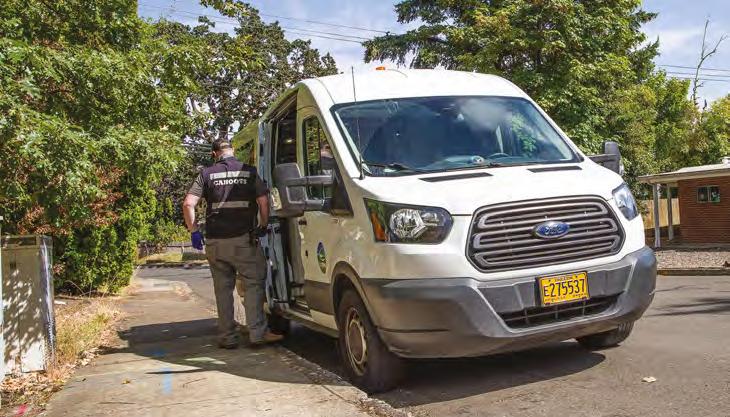

Pictured are CAHOOTS team medic Sara Stroo, EMT and QMHP, and crisis worker Laurel Lisovskis, CSWA. (Photo provided)
organization rallying behind the cause. Second, the community needs to have an existing robust network of social services already in place in order for the CAHOOTS model to work upon execution.
“The most successful foundation is going to be one where a community has lowbarrier services designed to address basic needs and additional addiction issues,” he said.
For example, you can’t just open a detox facility and expect to get results. You need to have an outpatient treatment facility as part of the solution. The same goes for adequate mental health resources so people don’t keep ending up in and out of the hospital in a vicious cycle.
His advice? “Get everybody at the table and in agreement that they want to move forward on something together. And really having that foundation of those resources for the community are the two things that really would make implementation as successful as it could be.”
The Glover Cary Bridge, a continuous truss bridge, spans the Ohio River between Owensboro, Ky., and Spencer County, Ind. (Shutterstock.com)

Owensboro, Ky.,
avoids rise in unemployment during pandemic
By ANDREW MENTOCK | The Municipal
In addition to impacting the health of millions of Americans, the COVID-19 pandemic has ravaged the economy, causing millions to lose their jobs. At its peak, the United States’ unemployment rate increased by 10.3 percentage points in April, hitting a peak of 14.7%. According to the U.S. Department of Labor, this was “the highest rate and the largest over-the-month increase in the history of the data.” The data goes back to January 1948.
This data reflected 15.9 million people losing their jobs, leaving a total of 23.1 million unemployed in April and the U.S. economy in a major recession.
As of September, the U.S. unemployment rate declined to a manageable yet still significant 7.9%, but throughout the ebb and flow of the economy this year, one city was able to avoid any serious job loss. In fact, the year-over-year unemployment rate in Owensboro, Ky., actually dropped to 4.2% in June 2020. According to CNN, the national unemployment rate at the time was still at about 11%.
“We actually dropped. We went from 4.4% to 4.2% from 2019 to 2020, which was probably the only city in a metropolitan area in the entire country that did that,” said Tom Watson, the mayor of Owensboro, who, at the time of press, was up for reelection.
It also helps that Owensboro is centrally located between major economic hubs in the Midwest, such as Indianapolis, Cincinnati, St. Louis and Chicago, but there’s more to it than that.
“We’re set up perfectly to survive things such as this because we have such a diverse economy,” Watson said. “We have so many different corporate citizens that are not affected by COVID-19.” There are two major distilleries in Owensboro. Green River Distilling Co. — formerly O.Z. Tyler Distillery — is the self-proclaimed fourth largest indeOwensboro, Ky., pendent bourbon distillery in the United Mayor Tom Watson States. The other is alcohol manufacturer Sazerac. Distilleries usually benefit from some tourism, but, as Watson put it, people continued to drink during the pandemic. Plus, they also began to manufacture hand sanitizer.
There’s also a tobacco factory in Owensboro, which is owned by Swedish Match. According to CNN, the company, headquartered in Stockholm, “saw surprising double-digit sales growth in the second quarter, fueled by demand for its nicotine patches in the United States.”
U.S. Bank also employs many people in Owensboro, and during the pandemic, people actually spent a lot of time refinancing once interest rates dropped. The company also helped residents apply for more than $16 million in Paycheck Protection Program Loans. Another corporation, Uni First, which provides uniforms for essential workers, was even more in demand. Then there’s Owensboro Grain, which produces grains, soybeans and other agricultural products and ships them all across the world.
Per Watson, the Owensboro Health Regional Hospital employs 4,000 workers and did not need to furlough or lay off any of its workers. The same goes for the second largest employer in the area, the public school system.
“We’re not dependent on one manufacturing company that has maybe 5,000 employees,” Watson said. “We have a lot of smaller ones that could continue to work. Our general fund was not affected by COVID.”
Additionally, Owensboro, which has a population of about 60,000, actually qualified for money from the CARES Act to help cover the extra hours first responders were working. The city also benefited from other relief aid initiatives during the pandemic.
“I always tell people we’re too big to be little and too little to be big, so that makes us just right,” Watson said. “That kind of proved itself during the COVID issue.”
Seemingly, the only industries that were impacted by the pandemic were the smaller restaurants and tourism. Owensboro is part of the Bourbon Trail. It also houses the Bluegrass Music Hall of Fame and Museum, which has been honored with the Kentucky History Award and is highly rated by Trip Advisor as a “must see” for all bluegrass lovers. Other draws include Owensboro Museum of Fine Art, Owensboro Museum of Science & History and the Western Kentucky Botanical Garden.
“The balance of our economy is so diverse that we really weren’t affected at all,” Watson said. “In fact, people that were maybe losing their jobs to small restaurants and small businesses, they were actually picked up by other companies. It just worked out really well. We’ve been truly blessed.” A stop on the Kentucky’s Bourbon Trail, Green River Distilling Co. is one of the oldest bourbon distilleries in the world, with its location having been used to produce bourbon whiskey since 1885. It is one of two distilleries that call Owensboro home. (Photo provided by Green River Distilling Co.)

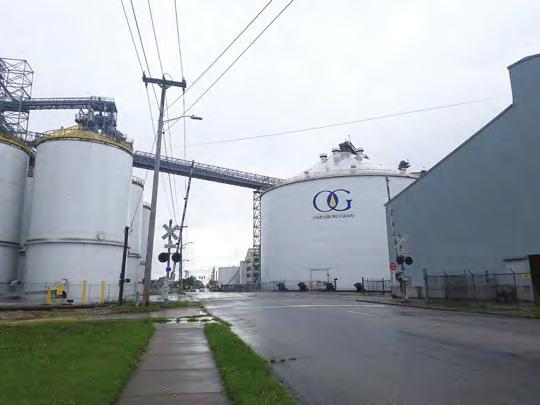
From health care to agriculture, Owensboro has a diverse economy. Owensboro Grain is one of its major employers. It produces grains and other agricultural products that are shipped all across the world. (Chelsea Lussier/Shutterstock.com)
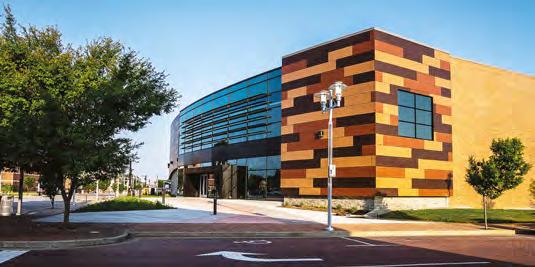
Owensboro, Ky., is home to the Bluegrass Music Hall of Fame and Museum, one of the many attractions that draw tourism. (Shutterstock.com)
Advanced, comprehensive and affordable truck scanners A special truck scanner to meet all your needs
1) Fast, easy-to-use, simple interface 8) Wireless diagnostics 2) Scans in seconds 9) All software preloaded, works independently 3) Save fleet maintenance costs 10) Covers all truck, off road equipment & cars 4) Anti-glare 10.5” HD touch screen 11) Diagnostic and bidirectional functions 5) Industrial quality WIFI/Bluetooth 12) Cloud print diagnostic report 6) One-click online updates 13) Internet capabilities (email, google etc) 7) 7) Remote help via Team Viewer 14) 14) Pre/Post scan report 15) Meet your municipal facility budget
FCAR HD Scanners covers over 100 manufacturers of all major trucks, cars and off-road equipment. 1992 to current. Full diagnostic coverage and bidrectional functions for:
Allison Bendix Caterpillar Cummins Detroit Duramax Eaton Freightliner Hino Internatonal John Deere Isuzu Kenworth Mitsubishi Fuso Peterbuilt Powerstroke Sterling Volvo/Mack Voith Western Star Wabco More vehicle makers
Scanning all engine, transmission, brake, chassis and body control for all trucks and off-road equipment, and computer control systems on cars, including hundreds of reset and bi-directional functions, (ie. calibration and actuation test, cylinder cut out, DPF forced regeneration, injector coding, cylinder power balancing, and compression test).
Wired or Wireless HD Scanners
Automatic premium A/C service machines





























The AC machine recover, recycle, evacuate and recharge both R-134a and HFO 1234yf with improved 97% efficiency. It has automatic refrigerant refill, flush and oil drain/inject – putting A/C lubricant back into the system.
Cover R134a, 1234yf refrigerants Auto tank filling Auto recycling and recovering Auto vaccum
Auto recharge System Flush
“The FCAR has been a major asset to the Town of Kent in its ability to diagnosis our full line of equipment. It covers passenger cars all of our emergency vehicles and the Police departments variety of vehicles from Chevrolet to Ford and heavy duty equipment including Mack plow trucks and Refuse trucks.
Full line of international trucks and all our off road equipment. Cat loaders and backhoes, bobcat excavators and skid steers to mention a few. We are able to see fuel rail pressure and ABS signals for accurate repairs. The Mack truck functions are proven to be useful and money saver in forced regeneration which in the past had to be towed back to the manufacture. What a time and cost saving tool. Not only are drivability concerns diagnosis but eration which in the past had to be towed back to the manufacture. What a time and cost saving tool. Not only are drivability concerns diagnosis but transmission ,body modules controlling HVACs functions and brakes have a broad coverage. The tool is so user friendly and is powered by the vehicle or equipment you are plugged into. Bidirectional capabilities make it useful as an OEM tool. I have already substantiated my ROI.The customer service and support team makes the experience a completely satisfied one and you are not forgotten after the initial sale. Great job and great product. I highly recommend to add this to your tool box! ” -----Nicholas Mancuso, Service Manager, Municipal Repairs Town of Kent
FCAR TECH Contact us:
Support Tel: 443-380-0088 Sales Tel: 844-322-7872 Web: www.fcarusa.com www.bludee.com

Cities come alive to light up the holidays
By JANET PATTERSON | The Municipal
Shutterstock photo
In the darkest season of the year, some municipalities come to life with the lush colors of the holiday season. It’s that time when the lights come out of the boxes and bins, and trees and shrubbery take on a new glow…it’s holiday lights time!
While lights here and there are not uncommon, there are places where the holiday season brings out the best and the brightest.
Bentleyville “Tour of Lights”
Bentleyville sprang to life in 2001 when Nathan Bentley, who owns an emblem and screen-printing business in Duluth, Minn., started the lighting display at his home on a busy road in a Duluth suburb. “I guess I wanted to beat out the neighbors who were also decorating,” Bentley recalled.
It wasn’t long before one of his co-workers facetiously started referring to the light display as “Bentleyville,” referring to the Dr. Seuss holiday story about Whoville.

By 2003, the display had grown so much that Bentley changed it from a drive-by event to a walkthrough display with Santa Claus visiting on weekends.
“When we moved to a town outside Duluth, I kept adding more and more lights, and it grew so much in two years that the neighbors just wanted it to go away.” To control the crowds, Bentley arranged to use some nearby horse pastures for parking and shuttled visitors to his home on nine school buses.
He estimates there were 72,000 visitors taking in the delights of Bentleyville.
By 2008, Bentley needed a break, so he decided to take the year off. But the city of Duluth had other ideas. Bentley received a phone call from Duluth’s Mayor Don Ness asking him to bring the display to the city.
“We formed a nonprofit, put together a board of directors and moved to a 22-acre park,” Bentley said.
On Nov. 27, 2009, Bentleyville “Tour of Lights” lit up for the first time in Bayfront Festival Park where Bentley’s original team of 25 people plus 600 more volunteers spent more than 10 weeks working their magic.
Bentley estimates more than 325,000 people each year enjoy the 5 million lights, warm themselves by bonfires throughout the park, relish holiday refreshments and take time for visits with Santa. The

LEFT: On Nov. 27, 2009, Bentleyville “Tour of Lights” lit up for the first time in Bayfront Festival Park, and it is estimated 325,000 people enjoy the 5 million lights each year. (Photo provided)
centerpiece of Bentleyville is a 128-foot Christmas tree built from 17 tons of iron, topped with an 8-foot ball and lit with 150,000 LED lights.
“This year we will have the first-ever drive-thru display,” Bentley said, explaining it’s to aid social distancing because of COVID-19.
In previous years, the Bentleyville store, which sells souvenirs, and donation boxes in the park helped to foot the $500,000 budget. This year, there will be a $10 per vehicle charge for visitors, and music will be piped into car sound systems as they cruise through Bentleyville.
“We’re bringing in a portable road for parts of the park that are not usually drivable,” he added.
Bentleyville opens Nov. 21 and operates starting at 5 p.m. every day until Dec. 27. Bright Nights at Forest Park in Springfield, Mass., features Seussland, a nod to one of its famous natives, Dr. Seuss. (Photo provided)
Bright Nights at Forest Park
Further north, Bright Nights at Forest Park lights up the winter sky in Springfield, Mass.
This collaboration between the city of Springfield and local nonprofit Spirit of Springfield celebrates the people and businesses that have put Springfield on the map.
Judy Matt, the president of Spirit of Springfield, and Pat Sullivan, superintendent of the city’s parks department, have worked in partnership since the project started in 1995. In those 26 years, Bright Nights has hosted more than 5 million people driving through the 3 1/2 miles of 400 lighted displays while listening to holiday music on radio station WELF.
“It’s just glorious,” declared Matt, who tells of the early days when she sent designs for the displays to Audrey Geisel, widow of Theodor Geisel, better known as Dr. Seuss, who was a Springfield native. Today visitors enter the Seussland area of Bright Nights to see Horton, Mulberry Street and even the Grinch, all in LED lights.
The 600-acre Forest Park, which is home to Bright Nights, was the work American landscape architect Frederick Law Olmsted, who designed New York City’s Central Park and the grounds of the U.S. Capitol in Washington, D.C.

Every year, new scenes are added to Bright Lights, with the emphasis on businesses and organizations that are a part of the Springfield community, such as Milton-Bradley, now Hasbro, MGM Springfield, the Springfield Thunderbirds hockey team and Lego, which is constructing a giant Lego Santa this year.
“After Sept. 11, 2001, we created a Garden of Peace scene with angels and flowers,” Matt said. Bright Nights was also the innovator in having a giant lighted menorah to honor the Jewish community and the first public Kwanzaa display in the United States.
She said 2020 has brought accommodations for contactless ticketing through QR codes on cellphones and tickets purchased at the local Big Y grocery chain. Bright Nights has always had special nights and special prices for certain groups, but the pandemic economy has meant an expansion of some of those special rates.
“We’ve had bus groups that come every year, but this year can’t afford the $175 admission for their groups because they can only have 50% occupancy. We lowered the price so they can still come and enjoy,” Matt said.
COVID-19 has cost Bright Nights in other ways, including $8,000 for masks to outfit the 70 volunteers who help with the event.
“And there are ancillary things that we can’t do like our Supper with Santa, the gingerbread house building party and the carriage and wagon rides through the park.”
However, come Nov. 20, all 700,000 LED lights will brighten the
night beginning at 5 p.m. daily until Jan. 3.


The residents of Windcrest, Texas, full-heartedly get into the holiday spirit, decking their homes in lights. Each year the city has a theme with 2020 being “Let Freedom Ring — A Tribute to our Military.” (Photo provided)
Light Up Windcrest
“There are people who move here just because of Christmas,” said Elizabeth Dick, coordinator of marketing and public relations for Windcrest, Texas.
The Light Up Windcrest tradition goes back to the town’s founding in 1959 when Barbee and Murray Winn, who owned a chain of department stores, handed each new homeowner a string of Christmas lights.
From its beginning, the tradition of decorating homes has grown as the population increased to 6,000 residents living in about 2,500 homes in 2 square miles northeast of San Antonio.
Festivities begin before Thanksgiving with the lighting of the tree at the Windcrest Civic Center. “We dedicate that tree to someone each year, and this year we’re dedicating it to Purple Heart recipients and their survivors. It will be a purple tree.” Dick said Windcrest is surrounded by military installations and is often lovingly referred to as Fort Windcrest.
In fact, this year’s theme for Light Up Windcrest is “Let Freedom Ring — A Tribute to Our Military.”
While the residents do some serious decorating to keep their lighting tradition alive, Dick said the city and the local Women’s Club hand out awards in categories that make the competition fun. If lighting the whole house is not going to work, she said, there have been prizes for the best mailbox, storage building, window or entrance.
“There’s also the Clark Griswold award for the most lights,” she said, referring to the lighting fiasco in the movie “Christmas Vacation.”
Visitors to Windcrest can pick up maps of the prize-winning displays to not miss one moment of sparkle. This year, however, instead of the many categories judged by local notables such as the county sheriff, people will receive a map to every participating house so they can vote for their favorite display.
“Since we probably won’t be able to have a winner’s dinner in January, we’ll give one prize instead of many,” she said.
“Light Up Windcrest just brightens the city during the dark time of the year,” Dick added. Her goal for 2021 is to get the city to help fund the largest Christmas tree in Texas. Florida’s wildlife, from alligators and seahorses to pink flamin-
Sebring Carousel of Lights
Tiny Sebring, Fla., is a city built at the turn of the 20th century by an Ohioan, George Sebring, who wanted to lure his wealthy friends from the bitter northern winters to the serene warmth of south-central Florida. Sebring established the town around groves of orange trees and incorporated it with the stipulation there would be no heavy industry.

He designed the town around a circle in its center, and that’s where for 36 years, John Spiegel has been helping the city light up with a variety of lighted groupings of pink flamingoes, blue dolphins and orange snails among the ever-popular snow people and Christmas angels.
“It all started on a bet,” Spiegel said of the Sebring Carousel of Lights. “I was on a committee to pick decorations from a company in Orlando.” He just wasn’t satisfied with lighted candy canes hanging from the light posts around the circle.
“So, I said to my friend, a local deejay, ‘I can do better than this by myself.’ So, we made a little bet.”
Spiegel found a retired welder in nearby Lake City, and he began sending him simple sketches of whimsical animals associated with Florida and the water. “I would go through coloring books to find just the right look.”
He sent the drawings to the welder who spent his summer creating the figures, which Spiegel lights with what he calls “old-fashioned filament incandescent bulbs.” He said he has no idea how many bulbs he uses to create the wonderland but knows he orders them by the case, which is 1,000 bulbs.
While the city contracts with Spiegel to produce the annual event that runs nightly from Thanksgiving weekend to Dec. 26, he said the sale of refreshments and a variety of games helps to make up most of the difference in the cost of the project.
“This year we won’t have the games and the refreshments, but that’s okay if we don’t make any money.”
Spiegel said there will still be children talking to Santa in the protection of a large piece of Plexiglas. He’s hoping to arrange the Santa photos so they look as natural as possible. “We have families who tell me they have a picture from every year of their family with Santa. They sometimes move to another part of Florida but still come back because this is a tradition for them.”
Another part of the holiday light tradition that won’t happen this year is the Singing Zoo, which features 14 life-size puppet heads that sing and tell jokes to an audience sitting on bleachers. The programs, which run periodically through the evenings, are interactive with the well-hidden puppet master talking to children in the audience. “We just can’t do that and social distance, so we’ll not have it this year.”
One of the later additions to the display has been a couple of snow machines that Spiegel said have become quite popular with the Florida children who have never experienced a white Christmas.
Read about McAdenville, N.C’s and Warsaw, Ind.’s light displays
The lights created for the Sebring Carousel of Lights make nods to goes and blue dolphins. (Photo provided)
exclusively on our website: www.themunicipal.com.

On the Web
To learn more about the light displays, check out these websites: • Bentleyville “Tour of Lights”—bentleyvilleusa.org • Windcrest Light Up—https://www.windcrest-tx.gov/190/
Windcrest-Light-Up • Carousel of Lights—https://visitsebring.com/event/ carousel-of-lights/ • Bright Nights at Forest Park—brightnights.org


There are around 20 million real Christmas trees sold annually. Instead of letting them decompose in landfills, towns across the country are coming up with creative recycling programs to give these trees a second life. (Photo provided by The National Christmas Tree Association)
Towns get creative to give Christmas trees a second life
By MAGGIE KENWORTHY | The Municipal
According to the National Christmas Tree Association, there are 20 million real Christmas trees sold in the United States each year. Each of these trees is decorated for a few weeks, only to be disposed of when their needles start to turn brown or the holiday season passes.
But, instead of letting a majority of these trees decompose in landfills, municipalities across the nation have started more than 4,000 local Christmas tree recycling programs.
One of the most common forms of this program is to transform the Christmas trees into mulch.
“It’s really a win-win for everyone,” explained Tim O’Connor, executive director of The National Christmas Tree Association. “It takes the cost of buying mulch out for the park district and lets them keep everything looking really nice, and it gives the trees a really good second life.”
The parks and community services department in Euless, Texas, is one of the many locations that puts on this type of tree recycling program.
Euless first started its Christmas tree recycling program in 1988 as part of the city’s commitment to Tree City USA. Each year, residents drop off between 50 to 100 trees to be recycled instead of thrown away.
The department then hosts a Christmas tree recycling event each year. At the event, the department puts on a tree mulching demonstration and gives away bags of mulch and tree saplings to residents. The rest of the mulch collected is used in landscaping beds around the town that can tolerate a more acidic product.
“Residents drop off their tree either before, during or after our threehour event. Our parks department runs the trees collected through our tree chipper and then distributes the mulch to the citizen so that they can use it in their landscaping beds,” explained Ray McDonald, director of the Euless Parks and Community Services Department. “Our horticulturist is on-hand the day of the recycling event to answer any questions (residents) might have regarding how to use the mulch.”
Each year the event is well attended, and this program is one that the town hopes to continue to put on for years to come.
“It strengthens our relationship with the community, saves our landfill from getting overrun with trees and helps fulfill our commitment as a Tree City,” explained McDonald.

The Christmas tree recycling program put on in Euless collects around 50 trees. During the recycling demonstration, residents are invited to ask a local horticulturist questions. (Photo provided by the Euless Parks and Community Services Department)

A former Euless Parks and Community Services Department employee, left, helps a citizen gather a bag of mulch after a Christmas tree recycling demonstration. The rest of the mulch will be used for the town’s landscaping throughout the year. (Photo provided by the Euless Parks and Community Services Department)
McDonald encourages other municipalities leaders who do not yet have a tree recycling program to consider starting one.
“Encourage your park board to get behind the cause and help promote the program throughout the community,” said McDonald.
If a municipality doesn’t have a large need for mulch or wants to get more creative with their program, there are plenty of other options out there.
“There are communities where they have sand dunes along coastal areas where they use the trees — they anchor them into the areas where there’s erosion — and then the trees, they act as snow fences essentially,” said O’Connor. “There are areas that have waterways, where they use the trees along the banks of streams. Those become staked into the banks, where the streams are eroding and they help with the erosion of the streams. There are places where they have fish habitats, mostly lakes, where they put the trees out on the ice when (lakes are) frozen, and as they thaw, the trees submerge and become a habitat for fish … I’ve even seen some communities where there are zoos that give the trees to the large animals to play with.”
Pine Knoll Shores, N.C., is one of the coastal municipalities that uses its Christmas tree recycling program to help prevent erosion.
“We don’t have quite as bad winter erosion as further north in the state, but we certainly have massive significant erosion during storms. In fact, (Hurricane) Florence removed a considerable amount of sand,” said Brian Kramer, town manager of Pine Knoll Shores. “We have several things that we do and one of them is this program, which is to take Christmas trees and place them anywhere we see that the secondary dune network has a gap in it.”
The town first began this program 10 years ago after Kramer heard about it during a conference.
“Christmas trees are perfect. You put them down, and for a couple months, they still have their needles and they trap a lot of sand,” said Kramer. “And the best part about it is it’s natural, so they just erode away. There’s no issues of debris left.”
Residents are asked to drop off their trees at a public beach access parking lot. Normally, the town brings in around 150 trees, with some

Euless Parks and Community Services Department employees Chandler Oster, left, and Carson Merchant pose with a Tree City USA flag during last year’s Christmas Tree Recycling event. The program first started in 1988 as a commitment to the town’s Tree City USA designation. (Photo provided by the Euless Parks and Community Services Department)
being collected by another nearby municipality. Then, the public works department spends around one week placing all the trees in mid-January.
While there is no education portion to the program, the residents are informed about the final use for the trees before dropping them off.
Kramer explained this program goes right along with the town’s mission of “inspiring appreciation and conservation of North Carolina’s aquatic environments.”
“If you have an object that you were going to dispose of, rather than going to a landfill, having it used for a good purpose, for protection of the town … is just a net positive. It’s a win-win,” said Kramer. “People don’t have to worry about trees unnecessarily going to the landfill, we don’t take up landfill space and we make good use of them for protection of the beach and creation of dunes.”
